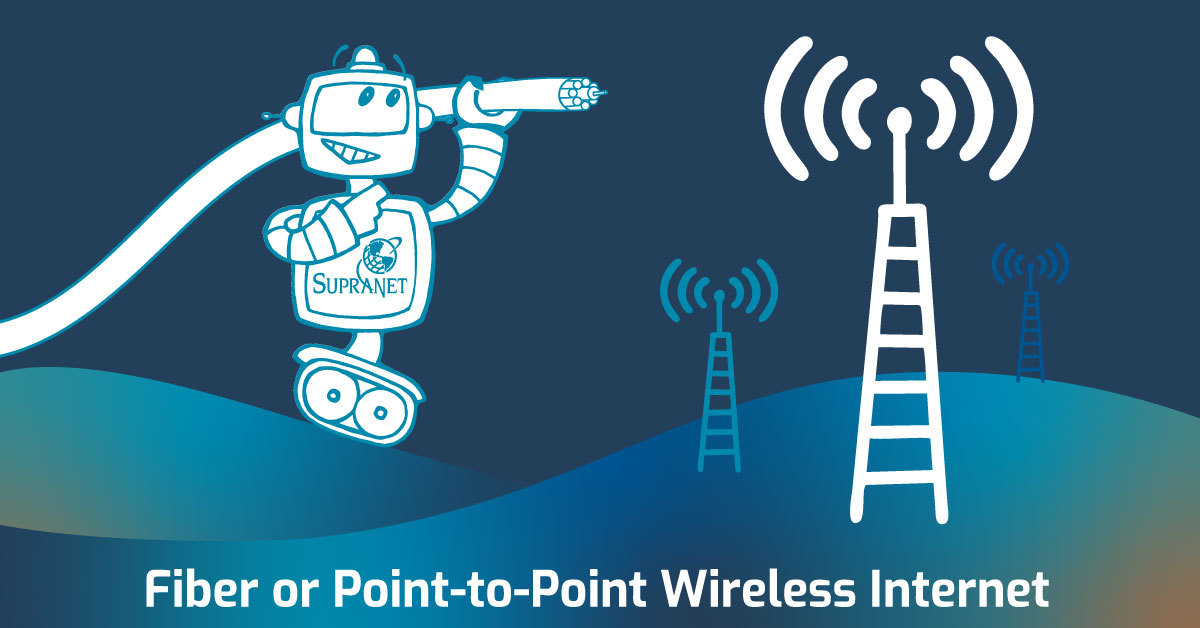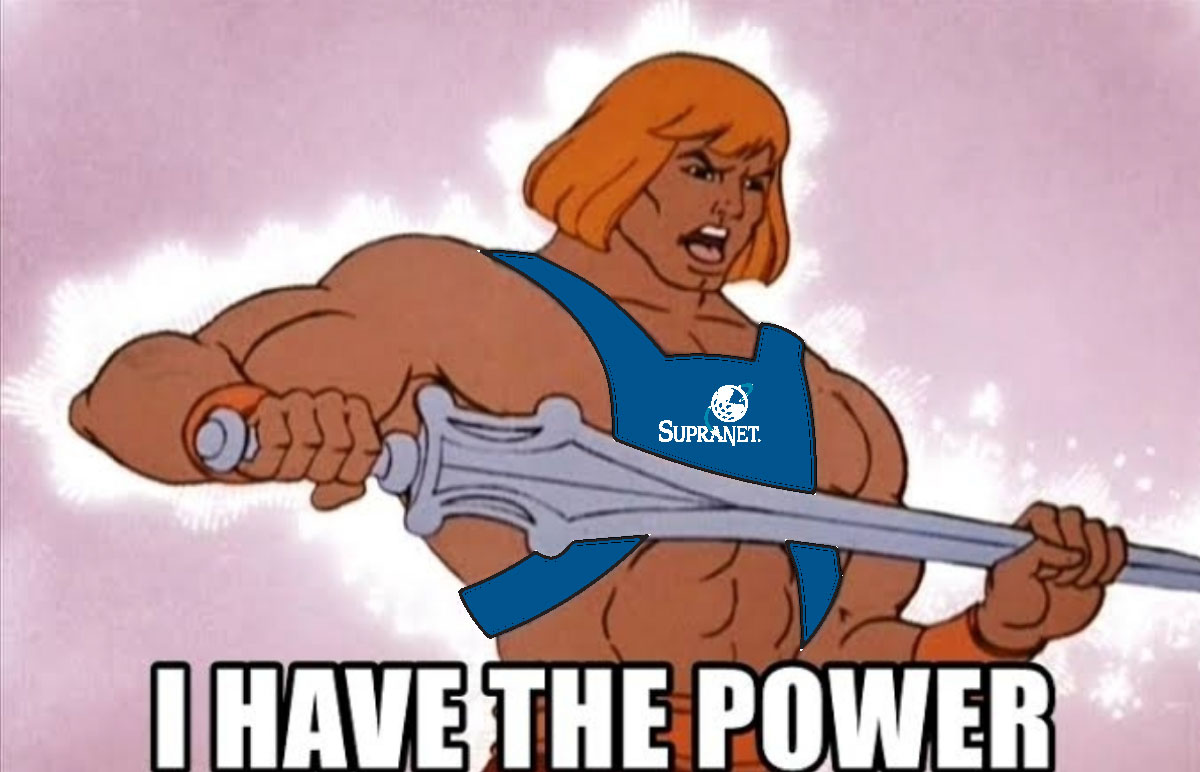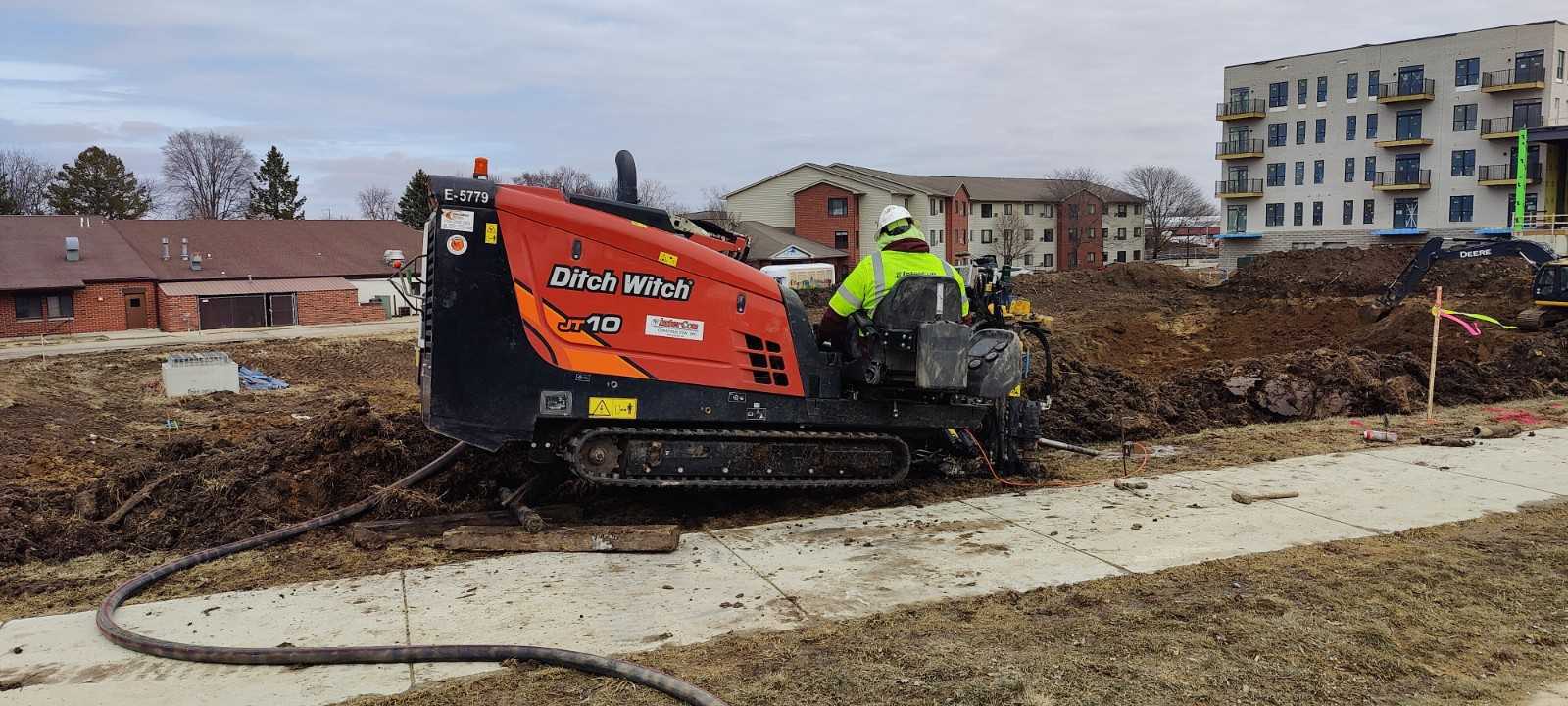Pros and Cons of Fiber Internet vs. Point-to-Point Wireless Internet

If you are not the most IT savvy purchaser of Internet services, this is the article for you. We know that talking with IT nerds can be a challenge if you don’t have your head in “the cloud” (or tubes, or radio waves) everyday like we do. However, we we want you to know enough to feel empowered to share with us what you think might be best for your organization. So, we’re connecting you with some Internet knowledge basics so you feel prepared to talk to us or other ISPs about fiber Internet or point-to-point wireless Internet.
In today’s connected world, fast and reliable Internet is vital. Two popular options that we have here at SupraNet are fiber Internet and point-to-point wireless Internet. While both technologies offer high-speeds, they differ in three ways:
- Infrastructure
- Performance
- Availability
In this article, we will explore the pros and cons of fiber Internet and point-to-point wireless Internet so you can purchase with the power of knowledge.

Let’s start with the tube everyone is talking about…Fiber Internet.
Fiber Internet
Fiber Internet uses fiber optic cables to transmit data at incredibly high speeds. Yes, it’s true. Information travels through glass tubes that are protected by a rubber tube and buried in the ground and connected to your home or office. If you are curious how that happens, check out this video from Ditch Witch.

Fiber Internet Pros:
- Speed and Reliability: Fiber optics can transmit data at the speed of light, resulting in extremely fast Internet connections. This makes fiber Internet ideal for bandwidth-intensive activities such as streaming, online gaming, and large file transfers. Additionally, fiber connections are highly reliable and less prone to interference or signal disturbances.
- Symmetrical Upload and Download Speeds: Unlike cable connections, fiber Internet offers symmetrical speeds. This means the upload and download speeds are the same. This is beneficial for activities like video conferencing, cloud storage, and content creation, where uploading large files is just as important as downloading.
- Scalability: Fiber infrastructure is future-proof and can support higher speeds as technology advances. This scalability ensures that fiber Internet users can benefit from even faster connections as the demand for data and our reliance on interconnected systems continues to grow.
- Security: Fiber optic cables are difficult to tap into, making fiber Internet more secure compared to other connection types. This added security is crucial for businesses and individuals who prioritize data privacy.
Fiber Internet Cons:
- Limited Availability: One of the main downsides of fiber Internet is its limited availability. Fiber optic infrastructure may require significant investment. However, we have an extensive fiber network throughout Madison. It is possible that we have fiber going to your building right now. You can check here! If we don’t, we can quickly see how much it would cost to get fiber to you and work with you on a plan.
- Installation Challenges: Installing fiber Internet can be time-consuming and costly. The process involves laying fiber optic cables, which may require digging trenches or accessing existing underground conduits.
- Susceptible to construction outages: If you have fiber going into your building, it is always possible that a backhoe could accidentally cut your cable during a construction project, cutting off your fiber Internet connection causing an outage. Point-to-Point wireless Internet access from a few blocks away could save you from that type of outage.
Point-to-Point Wireless Internet
Point-to-point wireless Internet utilizes radio waves to establish direct connections between two points. Yes, information travels in the AIR and bounces from towers or a point of presence (POP) on buildings and then magically appears on your computer screen.
Point-to-Point Wireless Internet Pros
- Cost: As stated above, if the infrastructure of fiber doesn’t exist in your area, the installation can be costly and time consuming. Getting set up on our point-to-point wireless network is an excellent option for small businesses with limited budgets.
- Quick Deployment: Wireless Internet can be deployed rapidly compared to fiber installations. This makes it an attractive option for new businesses or pop-up shops that need connectivity quickly or for a short period of time – when a fiber connection does not exist.
- Flexibility: Wireless connections offer greater flexibility, and can often be quickly turned up in a new spot if you are moving office buildings. This is advantageous for businesses that require on-the-go connectivity or have frequently changing work environments. Additionally, you can also implement a Managed Wi-Fi network in your building to provide access in different locations in your building or on your property. (More to come on this).
Point-to-Point Wireless Internet Cons
- Bandwidth and Congestion: With a point-to-point wireless connection you may experience slower speeds due to available bandwidth. If you are unclear about bandwidth, think about it like this…
The bandwidth is like traffic lanes. If the road has 2 lanes, that’s the bandwidth. If traffic is heavy and two lanes can’t support all the cars, it slows the speed of traffic down. So, if the bandwidth has only “two lanes” and too many people are working on a wireless network at the same time, it can become crowded and slow down.
There are options that allow for more bandwidth, but often require a change of equipment that may be more expensive.
- Signal Interference: Wireless connections are susceptible to signal interference, which can degrade the quality and speed of the Internet connection. Obstacles like tall buildings, trees, or metal structures can obstruct or weaken the signal, leading to a less reliable connection. Weather can also interfere with some wireless signals. We can’t control the weather, but our Supra technicians make every effort to keep our connections clear of physical obstructions, including engineering the solution to meet your budget and needs.
Should you choose fiber Internet or wireless Internet?
Choosing between fiber Internet and point-to-point wireless Internet depends on your specific needs and circumstances. Fiber Internet offers unmatched speed, reliability, and scalability, but it may be cost-prohibitive for installation. If you have the option, we will always recommend fiber Internet. If you don’t, we will always recommend SupraNet point-to-point wireless next because we have an incredibly stout network and the best customer service around. But if we can’t connect you to the Internet, we can help you find the next best option!




